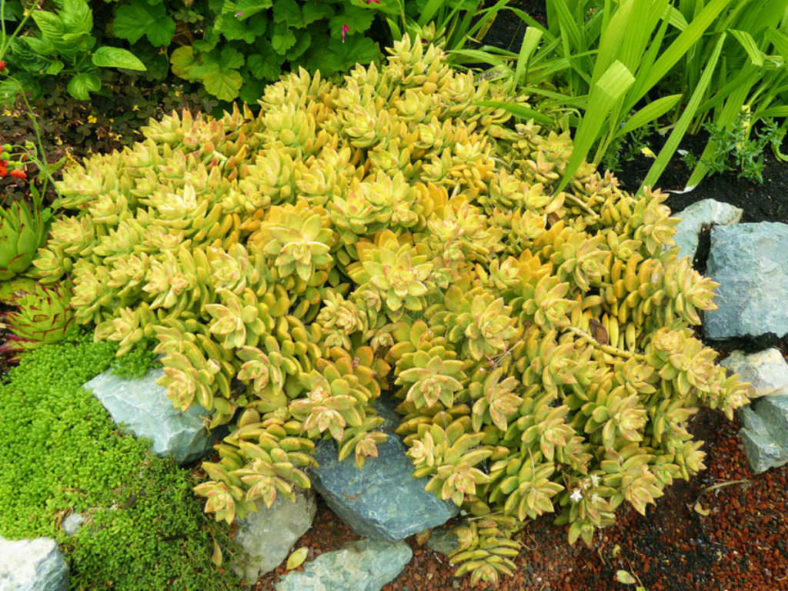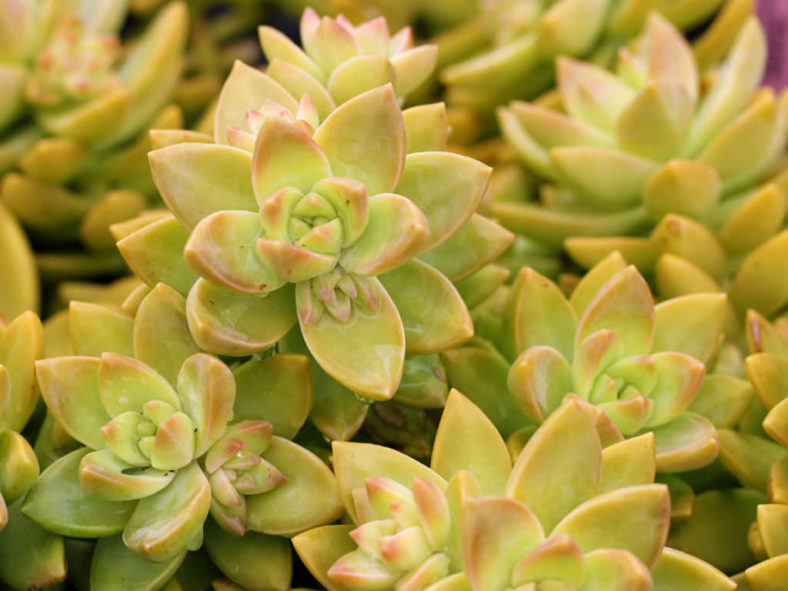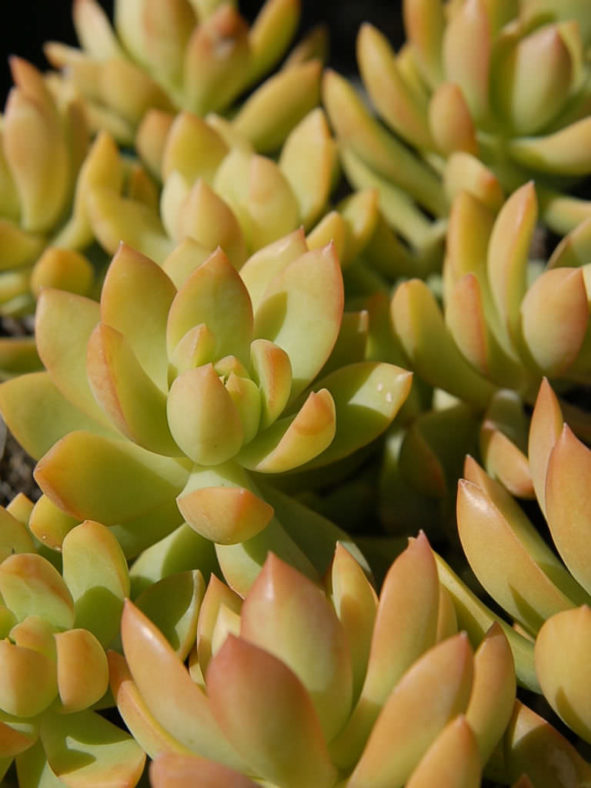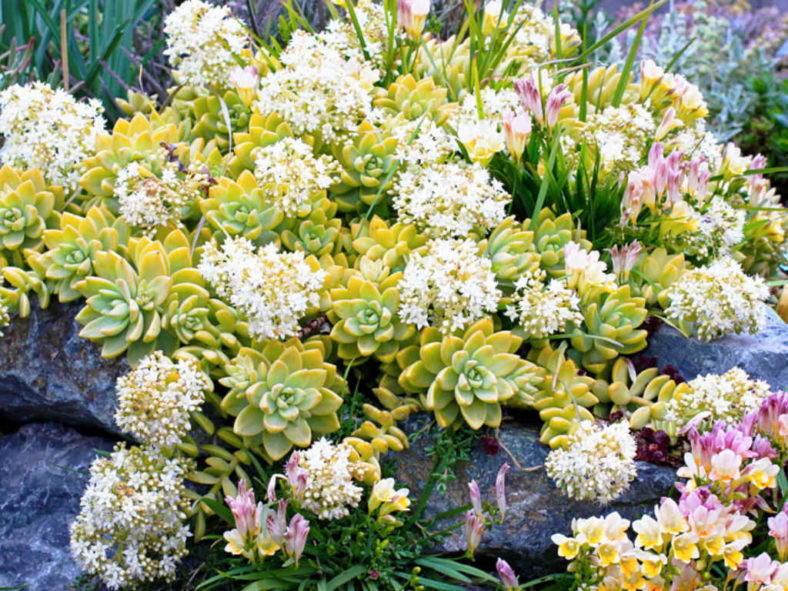Scientific Name
Sedum adolphi R.-Hamet
Common Name(s)
Adolph's Sedum, Golden Glow, Golden Glow Sedum, Golden Sedum
Synonym(s)
Sedum adolphii, Sedum nussbaumerianum
Scientific Classification
Family: Crassulaceae
Subfamily: Sempervivoideae
Tribe: Sedeae
Genus: Sedum
Origin
Sedum adolphi is native to Mexico. It grows in rocky terrain and on cliff faces in Veracruz.
Description
Sedum adolphi, also known as Sedum nussbaumerianum, is a lovely, much-branched succulent shrub with spreading, sprawling, or ascending stems and yellow-green leaves that take on the orange-red highlights in full sun. It grows up to 12 inches (30 cm) tall. Leaves are broadly lanceolate to obovate and up to 1.2 inches (3 cm) long. As stems age, they produce new leaves, shedding the oldest.
The white, lightly fragrant flowers appear in flat-topped umbel-like inflorescences from late winter to spring.
The late Henk 't Hart and Bert Bleij wrote the Sedum section in the lexicon "Illustrated Handbook of Succulent Plants: Crassulaceae" and noted Sedum nussbaumerianum to be very similar if not identical to Sedum adolphi. In "Sedum of North America North of the Mexican Plateau," Robert Clausen treated them as separate species in his book based on small differences in the inflorescences (Sedum nussbaumerianum has flowers all in the same plane, while Sedum adolphi has petals at different levels in cymes). However, the facts indicate that S. nussbaurianum should be regarded as a synonym of S. adolphi. The two plants have the same chromosome count; they came from plants grown from the same source (seeds gathered by Carl Purpus in 1907), and both have corymbiform inflorescences. Therefore, with a priority of 12 years, Sedum adolphi is the valid name.
Though often seen with 2 "i"s, this epithet's proper spelling should have a single "i" as this is the genitive form of Adolphus, the Latinized name for Adolf Engler.

Hardiness
USDA hardiness zones 9a to 11b: from 20 °F (−6.7 °C) to 50 °F (+10 °C).
How to Grow and Care
Choose a location with full sun to filtered shade. Golden Sedum is ideal for rock gardens because it spreads quickly with a trailing, low form. At maturity, it stands up to 10 inches (25 cm) tall and spreads to 2 feet (60 cm). Golden Sedum can also be used in mixed container gardens or even on walls and terraces.
This succulent tolerates most soils but thrives in light, slightly sandy, well-draining soils. In soggy, water-logged soils, the roots rot, and the plants suffer disease and pest problems. Plant Golden Sedum 2 feet (60 cm) apart. Combine this plant with other succulents or low-growing, drought-tolerant groundcovers.
Golden Sedum is drought tolerant once it establishes a deep root system. The best way to water this plant is to use the "soak and dry" method. Get the soil completely wet, and then wait until the soil is dry before watering again. Fertilize annually with a balanced fertilizer. According to package directions, apply the fertilizer to the soil in spring as new growth appears.
Learn more at How to Grow and Care for Sedum.
Cultivars and Hybrids
- Sedum adolphi 'Firestorm'
- Sedum adolphii 'Lime Gold'
- ×Graptosedum 'California Sunset'
- Sedum 'Pat's Pink'
Links
- Back to genus Sedum
- Succupedia: Browse succulents by Scientific Name, Common Name, Genus, Family, USDA Hardiness Zone, Origin, or cacti by Genus
Photo Gallery
Click on a photo to see a larger version.



